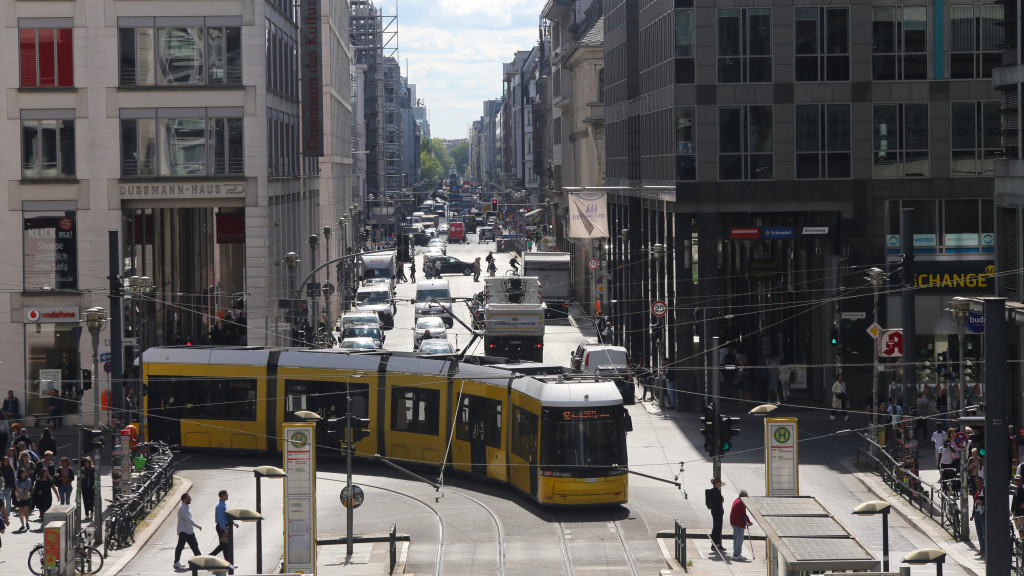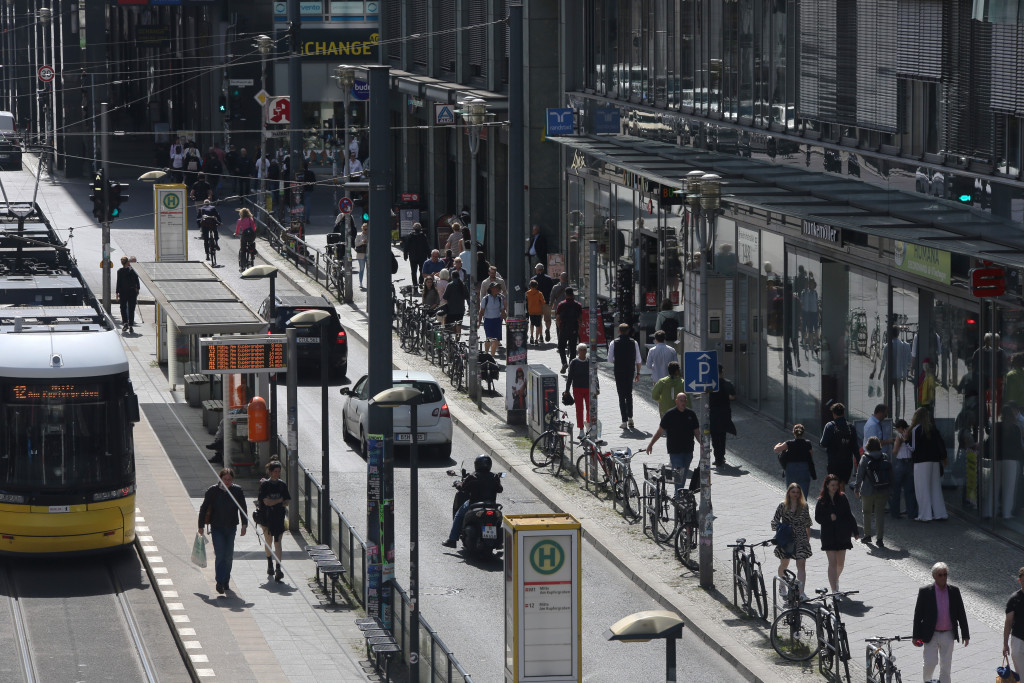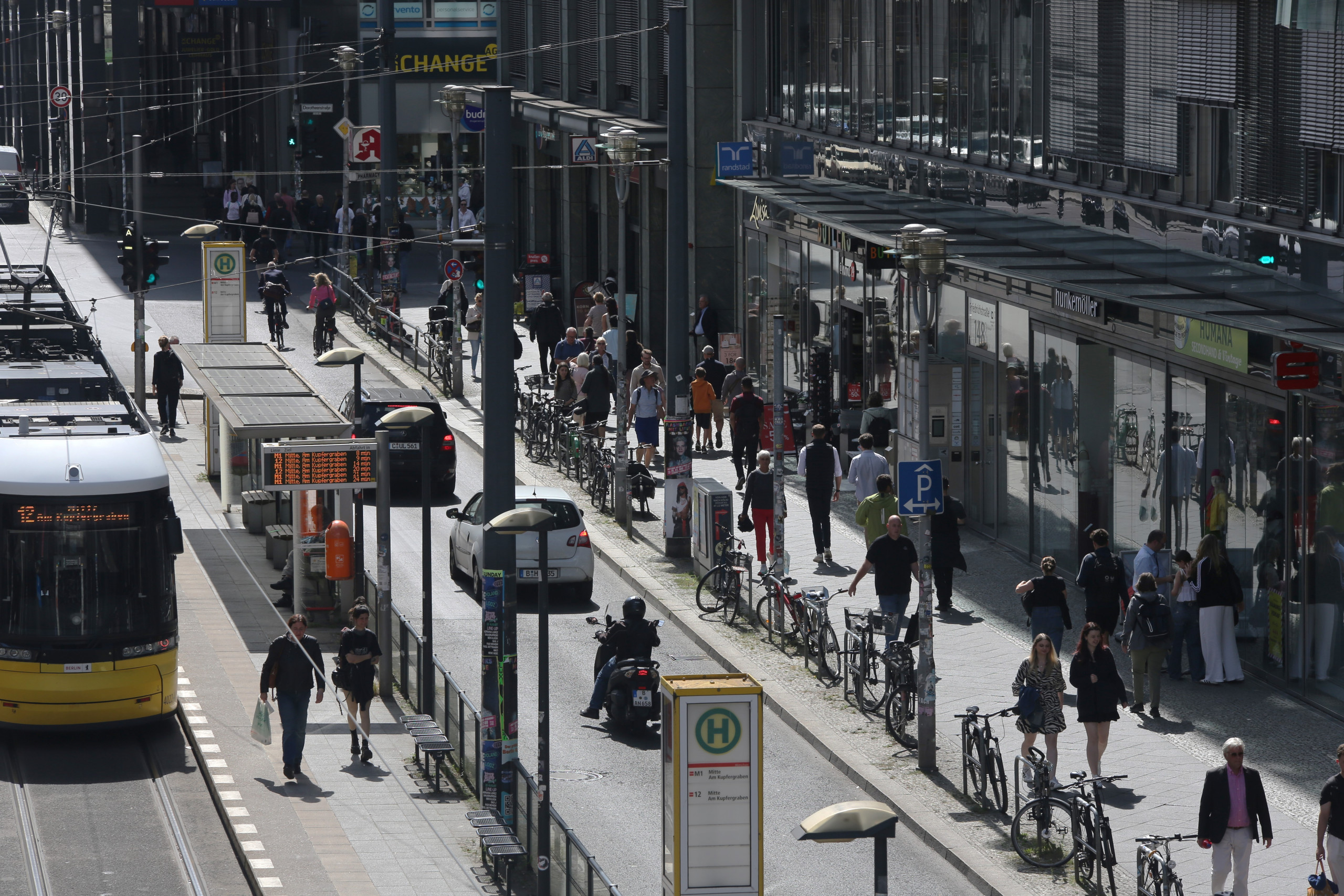Friedrichstraße: Four findings that explain the controversy
Friedrichstraße in Berlin has been the scene of heated debates since the 1990s. While the focus back then was on issues such as monument protection, urban development, and architecture, in recent years the spotlight has shifted to functional aspects such as traffic, commercial rents, and quality of life. The back-and-forth between car-free and car traffic has been causing confusion, political infighting, and strong emotions among residents, businesses, and the urban community for years. But what is this conflict really about? Is it just about parking spaces and bike lanes? Here are four facts that show why the dispute runs deeper.

1. The crisis in the retail sector is decades old – it is not the result of the car-free zone.
The widespread assumption that the car-free zone has ruined retail in Friedrichstrasse is a fallacy. The economic difficulties of the famous mile are not a new phenomenon, but the logical result of fundamental miscalculations made in the post-reunification period. The discussion about the location not working has been going on for “20 years or more.” The real causes are more complex:
The failed attempt at competition: After the fall of the Berlin Wall, Friedrichstrasse was positioned as a luxury competitor to Kurfürstendamm – a claim that never materialized and culminated in prominent failures such as the closure of Jagdfeld’s “Galeries 2006.”
The Mall of Berlin: The opening of the huge shopping center at nearby Leipziger Platz drew away purchasing power and put massive pressure on established businesses.
Lack of acceptance: Many Berliners never accepted Friedrichstraße as a shopping destination. It remained a place for tourists and office workers.
The real core problem resulting from these misguided ambitions of the 1990s is the extremely high rents. In the past, up to €250 per square meter was charged—an economic burden that has nothing to do with traffic management.
2. This is not about a traffic plan, but rather a symbolic battle.
The section of Friedrichstraße is 500 meters long. It was chosen as a symbolic showcase for Berlin’s traffic transformation. Ideological trench warfare between different political camps is being waged here, as the public conflict between the then Governing Mayor Franziska Giffey (SPD) and Transport Senator Bettina Jarasch (Greens) impressively demonstrated. Experts pointed out in the public debate that other locations in Mitte would be far more suitable for a pedestrian zone from an urban planning perspective. At Hackescher Markt, for example, “there are so many pedestrians that they sometimes fall off the sidewalk because it is so narrow.” This pressing practical necessity was ignored. Instead, Friedrichstraße was deliberately chosen as the venue for this fundamental conflict because of its prestige.

Foto: C.Hajer
3. Today’s problems began with the reconstruction in the 1990s.
Historically, Friedrichstraße was a place with a small-scale, lively structure that was once described as a street “with more bars than house numbers.” After the fall of the Berlin Wall, this image changed radically. Investors bought entire blocks of buildings and replaced the established structure with large-scale “investor dreams” such as the Friedrichstadt Passagen, built between 1992 and 1996. These huge commercial buildings and neighborhoods were supposed to bring luxury and glamour to Berlin, a promise that was never fully realized in the city. As a result, the street was transformed into an “investor desert” whose architecture did not fit in organically and which offered little in the way of quality of life for many Berliners and tourists.
4. The traffic experiment was marred from the outset by a flawed process
Criticism of the car-free Friedrichstraße was directed less at the idea itself, which originated in civil society initiatives such as “Changing Cities” in 2016, than at its implementation by the state. Even proponents of traffic calming sharply criticized the approach. The main shortcomings can be summarized with three terms from the public debate:
“Forced happiness”: Residents and businesses were forced to accept a finished concept without sufficient participation and dialogue.
“Sloppy planning”: The design of the car-free zone seemed provisional. Plastic birdhouses and simple benches failed to create a genuine quality of stay and did not do justice to the location.
Poor communication: The lack of transparency poisoned the debate and provoked mistrust and resistance. A particularly memorable example was a meeting with the senator, at which the invited stakeholders had to learn about the final plans from the newspaper that same morning.
In particular, the very wide cycle path in the middle was seen as a “cardinal communication error.” It cemented critics’ accusations that this was not a promenade for everyone, but rather an ideologically motivated preference for bicycle traffic.
5. Master plan for the area is still years away
Anyone hoping for a quick and definitive solution for Friedrichstraße will have to be patient. The traffic trial has ended, cars are driving again, and responsibility now lies with the Berlin Senate. The Senate is working on an overarching “master plan for Berlin’s city center” that goes far beyond Friedrichstraße. The timelines, which are the responsibility of the Senate Department for Mobility, Transport, Climate Protection, and the Environment (SenMVKU) and the Senate Department for Urban Development, Construction, and Housing (SenStadt), are long-term:
• The inventory analysis for this master plan is to be completed by the end of 2024
• The final concept is not expected until the end of 2025
This master plan covers the entire area between Alexanderplatz and the Brandenburg Gate. Friedrichstraße is thus only one piece of the puzzle in a much larger and more lengthy planning process, the results of which are still completely open.
#CarFreeCity, #SustainableMobility, #UrbanMobility, #TrafficTransformation, #WalkableCities, #Retailberlin, #Urbantransformation
